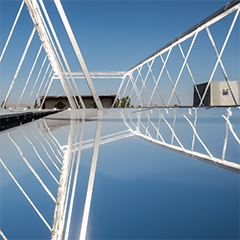What happen in 2016 and what can we expect in 2017
2016 was a record breaking year for solar in the Middle East. With record low tariffs on Dubai Electricity and Water Authority’s (DEWA) 800 MW Phase III project and Abu Dhabi Water and Electricity Authority’s (ADWEA) Sweihan project, we could call it a successful year for large scale solar on the Arabian Peninsula. Record low tariffs below 3 US$ cents per kWh attracted worldwide press attention.
These low prices have changed the perception of policymakers and industry leaders. It even led to a downward revision of the Feed-in tariff in Egypt and revives the debate of the usefulness of Feed-in tariffs versus competitive bidding in the MENA region. On an unsubsidized basis, solar PV without storage is now one of the cheapest sources of electricity available – it costs less than unsubsidized nuclear, LNG, and diesel used for off-grid power. Based on IRENA’s projections, solar PV LCOEs are expected to continue to decrease going forward, but whether it will continue to drop as rapidly is subject to debate.
Rooftop solar kicked off in the UAE with approximately 6 MW up and running by the end of 2016. It is expected the rooftop market in the UAE could reach 70 MW in 2017. This would mean more than tenfold growth in a 1-year period.





























